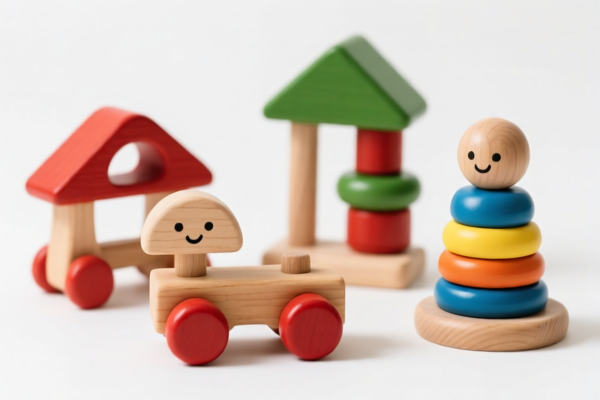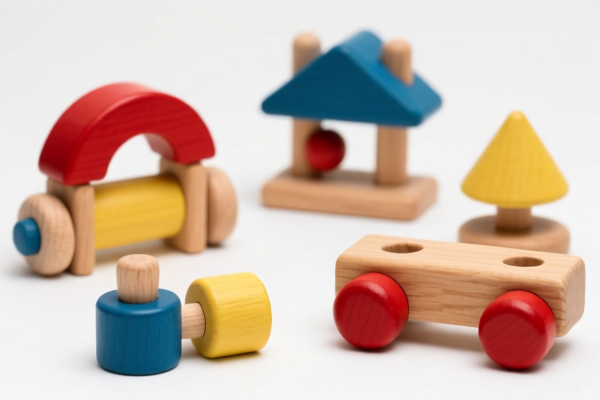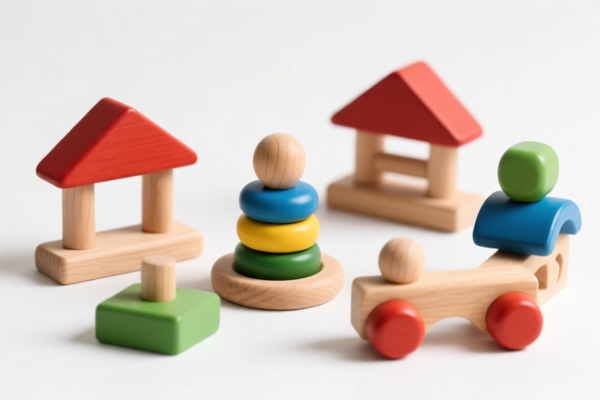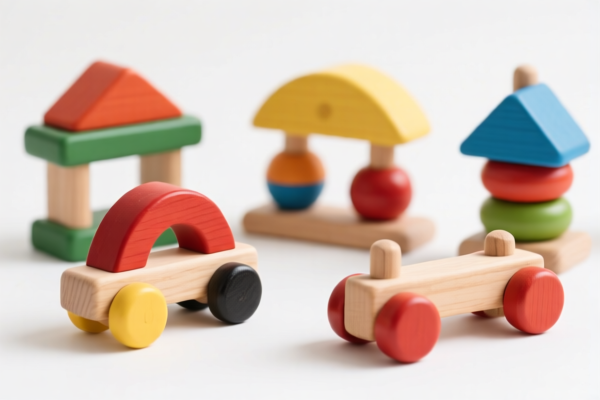| HS Code | Official Doc | Tariff Rate | Origin | Destination | Effective Date |
|---|---|---|---|---|---|
| 9503000090 | Doc | 30.0% | CN | US | 2025-05-12 |
| 9503000071 | Doc | 30.0% | CN | US | 2025-05-12 |
| 4823901000 | Doc | 55.0% | CN | US | 2025-05-12 |
| 4823902000 | Doc | 55.0% | CN | US | 2025-05-12 |




Wooden Kitchen Toys
Wooden kitchen toys are miniature representations of kitchen items and appliances, constructed primarily from wood. They serve as playthings for children, fostering imaginative role-playing and developmental skills.
Material
The primary material is wood, typically sourced from hardwoods like beech, maple, or birch for durability. Softer woods like pine are sometimes used for less frequently handled components. Finishes often include non-toxic paints, varnishes, or natural oils to protect the wood and enhance aesthetics. Increasingly, manufacturers emphasize the use of sustainably sourced wood and water-based, non-toxic finishes.
Purpose
These toys are designed to encourage:
- Imaginative Play: Children mimic cooking and kitchen activities, creating scenarios and narratives.
- Social Skills: Role-playing with others promotes communication, cooperation, and sharing.
- Fine Motor Skills: Handling small components, manipulating utensils, and assembling items improve dexterity and hand-eye coordination.
- Cognitive Development: Learning about food, quantities, shapes, and colors is facilitated through play.
- Language Development: Children practice vocabulary related to food, cooking, and kitchen items.
Function
Wooden kitchen toys function as replicas of real-world kitchen tools and environments. Common functionalities include:
- Pretending: Simulating cooking, baking, washing dishes, and serving food.
- Sorting and Counting: Some sets include food items that can be sorted by type, color, or quantity.
- Assembly and Disassembly: Some toys involve assembling or disassembling components, such as a cake or a sandwich.
- Storytelling: Providing props for children to create and act out kitchen-related stories.
Usage Scenarios
- Individual Play: Children can engage in solitary imaginative play, creating their own kitchen scenarios.
- Group Play: Multiple children can participate in role-playing, simulating a family meal or a restaurant setting.
- Educational Settings: Used in preschools and kindergartens to teach concepts related to food, cooking, and social skills.
- Home Playrooms: A staple in children's playrooms, providing a creative and engaging activity.
Common Types
- Play Kitchens: Miniature kitchens with countertops, sinks, stoves, and cabinets. Often include accessories like pots, pans, and utensils.
- Food Sets: Collections of wooden fruits, vegetables, meats, and baked goods. May be sold individually or as part of a larger set.
- Cooking Utensils: Wooden spoons, spatulas, whisks, and other tools designed for pretend cooking.
- Pots and Pans: Miniature versions of real-world cookware, often with lids.
- Tea Sets: Wooden teapots, cups, saucers, and plates for pretend tea parties.
- Bakery Sets: Include items like cakes, cookies, bread, and pastries.
- Cutting Food Sets: Food items that can be "cut" with a wooden knife, often held together with Velcro.
- Blenders/Mixers/Toasters: Realistic replicas of kitchen appliances, often with interactive features (e.g., buttons, dials).
Wooden kitchen toys fall under the category of toys, specifically those made of wood. Here's a breakdown of relevant HS codes based on the provided information:
- 9503000090: This HS code covers tricycles, scooters, pedal cars and similar wheeled toys; dollsʼ carriages; dolls, other toys; reduced-scale (“scaleˮ) models and similar recreational models, working or not; puzzles of all kinds; parts and accessories thereof. Since wooden kitchen toys are classified as "other toys", this code is applicable. The total tax rate is 30.0%, comprised of a 0.0% base tariff, a 0.0% additional tariff, and a 30.0% additional tariff effective April 2, 2025.
- 9503000071: This HS code also covers tricycles, scooters, pedal cars and similar wheeled toys; dollsʼ carriages; dolls, other toys; reduced-scale (“scaleˮ) models and similar recreational models, working or not; puzzles of all kinds; parts and accessories thereof, but specifically for “Childrenʼs productsˮ as defined in 15 U.S.C. § 2052: Other: Labeled or determined by importer as intended for use by persons: Under 3 years of age. If the wooden kitchen toys are intended for children under 3 years of age, this code applies. The total tax rate is 30.0%, comprised of a 0.0% base tariff, a 0.0% additional tariff, and a 30.0% additional tariff effective April 2, 2025.
It is important to determine if the wooden kitchen toys are specifically labeled or determined by the importer to be for use by children under 3 years of age. If so, HS code 9503000071 should be used. Otherwise, HS code 9503000090 is more appropriate.
Customer Reviews
No reviews yet.